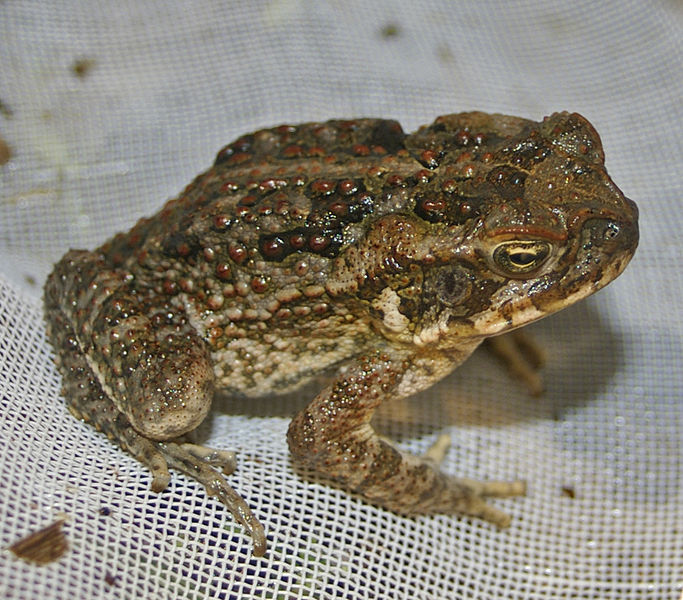
The toxic and invasive cane toad (fossil found from Miocene era, 23 to 5 mya) is offered as an example. From ScienceDaily:
The researchers looked at over 600 species from all classes of vertebrates worldwide and did a phylogenetic analysis to consider the evolutionary relationships between species. They tested for an effect on geographic location; reproduction mode; newborn dependence behavior; body size; and color variations between individuals of the same species.
They found that species with varying colored individuals; those that give birth to live young; and/or those that live at low latitudes, were the most resilient to past environmental changes.
Species found at higher latitudes tended to be younger because extinction rates are greater at high latitudes, while low latitudes offer more stable climate conditions. Oviparous species (egg laying organisms) found at higher latitudes also tend to be younger. However, latitudinal distribution had no influence on viviparous species (organisms which give birth to live young), suggesting they are more resilient to cold climates. The evolution of viviparity is associated with species ability to inhabit cold climates.
Body color is a major evolutionary influence as it is involved in behavior and predator-prey interactions, and allows species to exploit a larger range of habitat types. Color polymorphic species (organisms with at least two different colored forms) were older, by an average of 1.86 million years, than species with no individual color variation. Paper. (public access) – Laure Cattin, Johan Schuerch, Nicolas Salamin, Sylvain Dubey. Why are some species older than others? A large-scale study of vertebrates. BMC Evolutionary Biology, 2016; 16 (1) DOI: 10.1186/s12862-016-0646-8 More.
It sounds very general, but it is a start in taking the question of stasis (durable species) seriously. That is, to understand why evolution might happen, we need to also understand why it might not.
Note: While the cane toad is said to “evolve” very quickly, the changes sound like temporary adaptations. Not committing itself to permanent evolution could be a factor in the toad’s widespread success.
See also: Mammal-like reptile survived much longer than thought. Darwinian speculation about why mammals outcompeted mammal-like reptiles quite early is at risk of slow death by growing numbers of exceptions and uncertainties.
and
Stasis: Life goes on but evolution does not happen
Follow UD News at Twitter!